Yin Yoga Petts Wood 
Welcome to Simon Tolsons' Yoga Studio in Petts Wood
The Yang Way
A common metaphor when commencing a journey into yoga is to climb a mountain. Quite often we start at the base, admiring and inspired by other who are climbing already or even reached the summit. Yet it can be difficult to see the peak of the mountain, it's hidden by clouds obscuring our vision of where our path will lead to. Just as there are many way to ascend a mountain there are many forms of yoga to follow. Each path can be varied with different rates of progress. During our journey we can meet different guides who can help (or hinder) our climb, but we meet very few individuals who have already actually reached the summit called 'Samadhi' where everything will become clear to us (literally above the clouds).
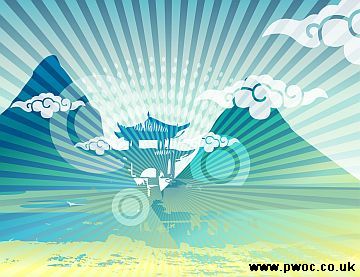
The summit itself is nearly always a small place. Only a few people can fit on it at once, you can't stay here for ever and have to come down from time to time. The effort used in climbing our metaphoric mountain is very 'yang' in nature. Yang involves muscular effort to do forceful and dynamic actions. To many yogi's, yang is their favourite way to live, and the only way they know. But it is not the only way. There is a 'yin' path to compliment the 'yang' way. Yin is passive and yielding and metaphorically is more of a journey down a relaxing river - a Yin River!
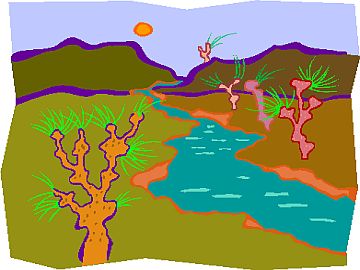
The Yin Way
So for every 'Yang Mountain' you climb I suggest you compliment it with a 'Yin River'. A passage down the yin river guides you down to the universal ocean. Along the route you will again meet guides to help steer your course in the ever changing waters. You will need focus on the subtle changes in the ebbs and flow of the currents - sometimes meeting rapids and at other times complete stillness of water. It is during these times of stagnation we have time to investigate and reflect on many interesting sights; what Bernie Clark calls our 'Yinsights'. Here our destination is plentiful, an endless universal ocean rather than a small crowded peak of a mountain. The universal ocean can accommodate everyone.
To be a balanced yogi you need to learn both how to climb a mountain and to swim a river - and just like swimming and climbing have many techniques, skills and styles to accomplish so does yoga making it probably the best all round balanced way to exercise and live.
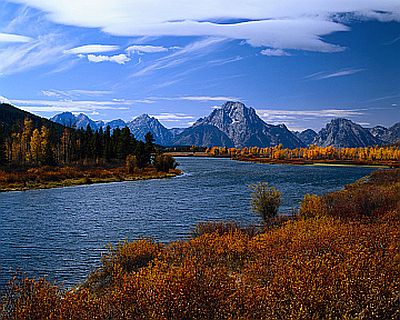
What is Yin Yoga?
Yin yoga is a style of yoga to both balance and compliment the more active styles of yoga (yang). Most forms of yoga today are dynamic, active classes designed to work only half the body's tissues - the muscular half - the 'yang' tissues. The aim of Yin yoga is to open up the bodies joints and connecting tissues by decompressing the joints, stressing the ligaments and fascia tissues - the 'yin' tissues, stimulating the meridians and hence energy pathways through the body. It is a much more passive style of yoga requiring the student to hold poses from 1 to 5 or more minutes. However, yin practice can be quite challenging still due to the long duration of the poses.
The Gurus' of Yin Yoga:
Yin yoga has become worldwide through a few great masters: Paul Grilley, Sarah Powers, and Bernie Clark. I was first introduced to Yin Yoga through Paul and have studied all three's work to provide me with the knowledge and wisdom they have to offer. Bernie Clark has an extensive website - for those interested in more reading - with a complete guide to Yin Yoga and has kindly allowed me to provide you with the link in my Links page.
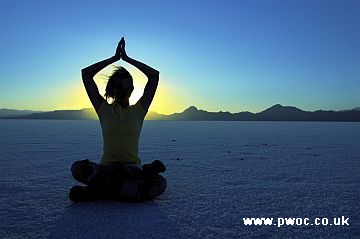
Yin and Yang
Everything in life is defined by patterns. All around you you'll see patterns surrounding you - look at the dark colours and look at the light colours, feel the softness of your skin and the hardness of a nail. We always make contrasts about things - light and dark, soft and hard - these are comparisons of something within a context. Within life we strive towards balance - what the Daoist call 'the Dao'. However, nothing is static everything is ever changing moving towards or away from the centre. But to return to the centre is the ideal. Yin and Yang are relative terms, almost the opposite sides of the same coin - one cannot exist without the other - and how often have you found it hard to balance a coin on its' edge?
The ancient Chinese observed that everything has a yin and yang attributes. The yin character refers to the shaded side of a hill or stream; yang refers to the sunny side. Yet you can't have shade without light, and light can't exist without knowing what darkness is. It is here we can say that there is no absolute yin or yang characteristics - white is considered yang while black is considered yin in the context of colour. Then what about grey on the spectrum - grey is both yin and yang! Compared to white grey is darker so is yin, but compared to black it is lighter so would be yang. This is why the Western world has struggled for so long to understand the ancient Chinese philosophy of Yin and yang.
Look at the yin/yang symbol and you see the white dot within the black and the black dot within the white - even within darkness there is light and vice versa. So even in the dynamic yoga sessions of Hot Yoga (yang) there is a yin aspect (relaxation).
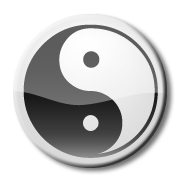
As stated earlier we need balance - come back to our centres - so after a long vigorous muscular session of yoga taking us into a yang characteristic we need to come back to our balanced centre with a yin recovery of corpse pose. If we stay too long in an unbalanced situation we become stressed, ill, out of function; so we need the universe to restore balance by throwing us to the other side - we may become ill to make us rest.
Yin |
Yang |
Dark |
Light |
Cold |
Hot |
Passive |
Active |
Deep |
Superficial |
Solid |
Hollow |
Downward |
Upward |
Water |
Fire |
Female |
Male |
Moon |
Sun |
Night |
Day |
Dragon |
Tiger |
Taking another example for explanation of Yin and Yang we have the heart, a soft, hollow, muscular, organ contained deep within the chest. Then we have the sternum (breastbone) a hard, solid, bone resting on the surface of the chest. So if we were to ask which is yin - heart or sternum - we need to ask more; with a context it makes it easier. In terms of the yin/yang quality of hardness the heart is hollow and soft compared to the sternum which is hard and almost solid. So the heart is yang and the sternum is yin. But when comparing the location, the heart is deep and the sternum is superficial. Now the heart is yin and the sternum is yang.
On a basic level we describe muscles as yang tissues because they are soft, elastic, superficial, hot, and like rhythm. Whilst we describe bones as yin because they are hard, non-elastic, deep, 'cold' and stay the same lacking the rhythm of a contracting muscle shortening and lengthening. Staying in this basic classification of tissues we group muscles and tendons into one group (yang tissues) and bone, ligaments and fascia into the other (yin tissues). So we can say that yang tissues are elastic, employing rhythmical and repetitive movements to stress them to grow and function; whilst yin tissues are much less elastic preferring long periods of small stress to cause adaptation and growth and function. Think of wearing orthodontic braces to realign the teeth - this requires a few years not just a few repetitive quick movements of the jaw bones.
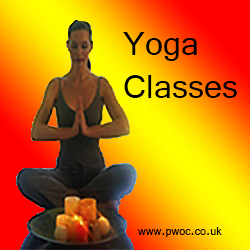
In order to exercise in a yin way we need long periods of gentle stress to the harder tissues to allow them to adapt and function appropriately. In the same way to exercise the muscles we need repetition of contraction and stretch to allow adaptation and growth. Hence yin yoga holds the poses for longer periods of time focusing on the joints rather than the muscles.

Now remember the tiny black dot within the white of the yin and yang symbol. Within yang there is yin and the same is true of our muscles. Each muscle has a proportion of fascia within it (up to 30%). Also our yin tissues also contain yang elements - elastic fibres called elastin is buried deep within the ligaments and fascia too. When we are born we are so much more flexible and pliable - we are full of elastin in our yin tissues we are yang like creatures. But as we grow and age we lose more and more elastin and within our yang tissue lay down more and more scar tissue in the form of collagen causing us to become stiffer and stiffer and much more yin like creatures. So in our youth we can exercise very easily in a yang style whilst as we age we should naturally exercise in a yin style. And as we have already said we need the yin to compliment the yang and vice versa so at all times striving towards balance and harmony - the yin with yang - the two sides of the same body!
